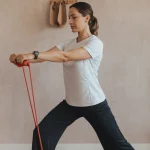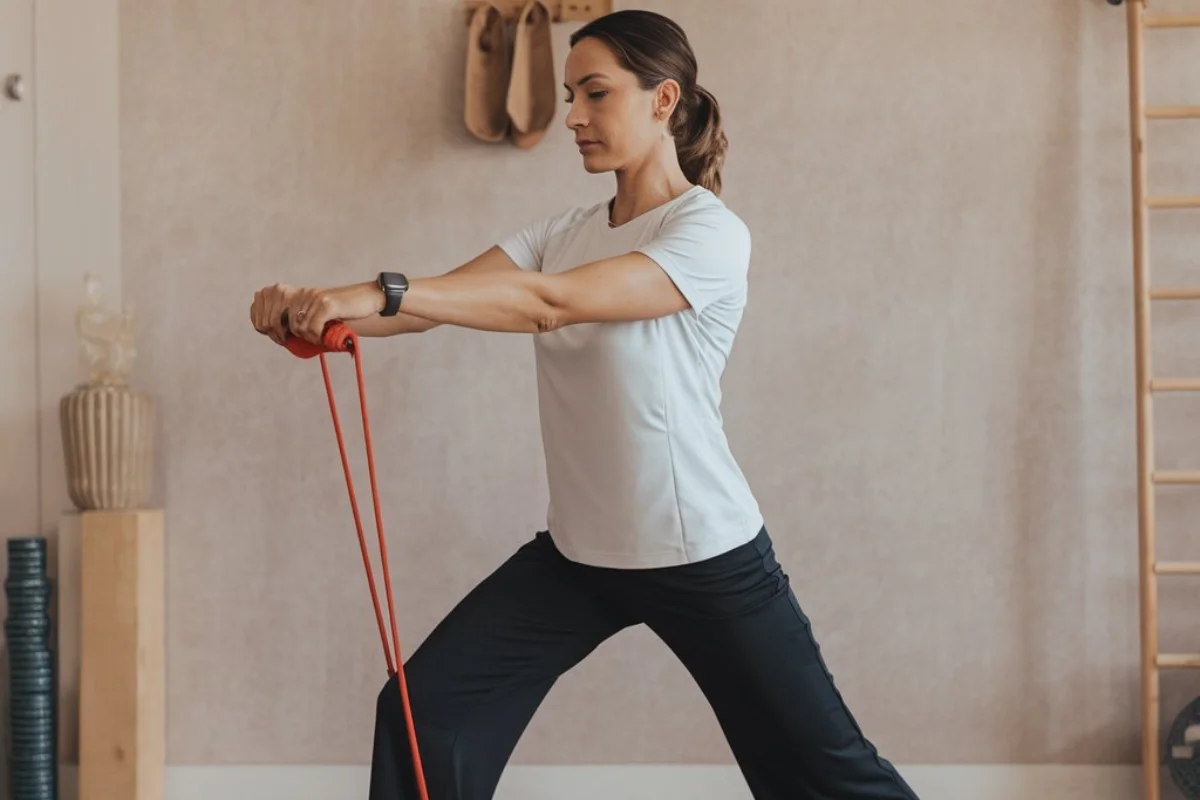Common yet unpleasant, trochanteric bursitis exercises produces discomfort in daily actions such as walking, stairs climbing, or even side laying and affects the exterior of the hip. It arises from repeated stress, weakness in muscles, injury, or poor posture leading the bursa—a fluid-filled sac cushioning the hip joint—to becoming inflamed. Though it can afflict anyone, it is most common among senior individuals, athletes, and those leading inactive lives.
Luckily, focused workouts can greatly lower discomfort, increase hip mobility, and prevent future flare-ups. In fact, gentle stretches, strength-building activities, and balance exercises work together to reduce pain and restore proper hip function. This tutorial will include motions you should avoid in addition to the best trochanteric bursitis exercises—including those advised by authorities like the NHS.
Following these rules can help you to control your symptoms and enhance your hip condition generally.This page will provide the professional direction you need to heal properly whether your search is for pictures-based rehabilitation programs or hip bursitis exercises for elders.
Understanding Trochanteric Bursitis and Its Impact on Mobility
The condition known as trochanteric bursitis inflames the bursa, a fluid-filled sac that reduces friction between tendons and bones, therefore causing pain on the outside of the hip.
Although overuse, injury, or bad posture can all set off it, particular exercises can help reduce pain and restore mobility.
Best Trochanteric Bursitis Exercises for Pain Relief
Stretching Exercises for Trochanteric Bursitis
Stretching can assist hip muscles become more flexible and tension be released, therefore lowering inflammation surrounding the bursa.
-
Standing Iliotibial Band (IT Band) Stretch
- Get straight and cross the injured leg behind the other.
- Till you feel a stretch in the outer hip, tilt toward the injured side.
- Hold for thirty seconds three times.
-
Seated Piriformis Stretch
- Lean back in a chair and lay the afflicted ankle across the other knee.
- Lean slightly forward, maintaining a straight back, until you feel a hip stretch.
- Hold for 20–30 seconds and repeat twice.
Strengthening Exercises for Trochanteric Bursitis
Developing hip muscles helps to improve support and lessens bursa strain.
-
Clamshell Exercise
- Lie on your unaffected side with 90-degree bent knees.
- Keeping feet together, stabilize the hips by lifting the top knee.
- Lower the knee and repeat 10–15 times.
-
Glute Bridges
- Lie on your back feet flat on the ground and knees bent.
- Lift your hips while you squeeze the glutes; hold for a few seconds then lower.
- Perform 12 repetitions.
Balance and Stability Exercises
-
Single-Leg Stand
- Keeping the other foot just off the ground, stand on the afflicted leg.
- Hold for thirty seconds; then, alternate legs.
-
Side Leg Raises
- Lie on your side of least damage and gently raise the top leg.
- Bring it down gently and under control.
- Perform 10 repetitions.
Trochanteric Bursitis Exercises to Avoid
A few exercises can aggravate the issue. Try to avoid:
- Running on hard surfaces
- Deep squats
- High-impact aerobics
- Leg presses
Hip Bursitis Exercises for Seniors
Low-impact activities that preserve joint mobility and strength will help older people.
-
Seated Marching
- Sit on a sturdy chair and lift one knee at a time.
- Perform 10 repetitions per leg.
-
Mini Squats
- Stand behind a chair and gently squat without too bending the knees.
- Hold for a few seconds then gently get up.
FAQs
What is the best exercise for trochanteric bursitis?
The optimum exercises for building and elongating the hip muscles include the glute bridges, IT band stretch, and clamshell. These exercises especially increase flexibility and help the muscles around to be stronger. Including them within your regimen will also help to improve stability and lessen hip joint stress. You might thus feel less discomfort and run less danger of future flare-ups.
What is the fastest way to heal bursitis of the hip?
Use rest, cold therapy, anti-inflammatory medications, and targeted workouts to hasten recovery. Combining these techniques also helps lower inflammation, ease pain, and more successfully regain mobility. You can therefore heal faster and stop next flare-ups.
What activities should be avoided with trochanteric bursitis?
Does trochanteric bursitis go away?
Indeed, the illness usually disappears in a few weeks to months with appropriate therapy, rest, and exercises.
Conclusion
With appropriate workouts, trochanteric bursitis can be controlled rather successfully. Workshops in stretching, strengthening, and balance-oriented techniques can help lower discomfort, increase mobility, and stop recurrence. Still, if pain lasts, you really should see a physical therapist.











